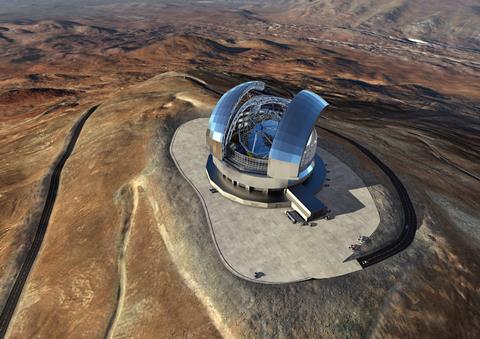Kuehne + Nagel (K+N) played an instrumental role in the delivery of the European Southern Observatory ELT M5 mirror cell, which will be part of a gigantic observatory in South America.

The M5 cell measured 3.99 m x 3.25 m x 2.58 m, which is small by usual project logistics standards, although the cargo itself was particularly special.
Located in Chile’s Atacama Desert, the ELT is considered the world’s biggest eye on the sky. Nearly 800 individual hexagonal mirrors will be installed to create the 39 m diameter main mirror. The M5 cell will be used in this construction as a support mechanism for the world’s largest tip-tilt mirror: it ensures that the images collected by the ELT are stabilised and thus made analysable.
European Southern Observatory, headquartered in Garching near Munich, is responsible for the design, build and operation of the telescope. It contracted K+N to transport the special cargo. The heavy transport, accompanied by escort vehicles, travelled from the production plant in Spain through France to Germany. At the centre of the convoy: the trailer with the 6-tonne mirror cell.
“Projects like this require a high level of coordination in advance: all parties involved must coordinate and remain flexible. On the one hand, regulatory requirements must be met, and on the other, solutions must be found for the customer’s wishes,” said Robert Witzl, business development manager at K+N. There are also plenty of details: “We check the access routes or measure the building structures for handling in the hall. For the unloading process, load diagrams and lifting heights must be considered.”
With the ELT in place, it will be possible to directly discover and observe Earth-like planets of other stars, said the Federal Ministry of Education and Research, which is also involved in funding the telescope. In this way, it may be possible to find indications of water, an atmosphere, and even life-friendly conditions there, it said.
“The M5 mirror cell is a crucial part of the ELT. Many years of research and development went into its construction. This makes it precious freight and its transport a critical undertaking. There was big excitement when the mirror cell reached us safe and sound. It was a great relief to know such a unique piece of precision engineering in experienced hands for the transport,” said Roberto Tamai, ELT programme manager at the European Southern Observatory.

















